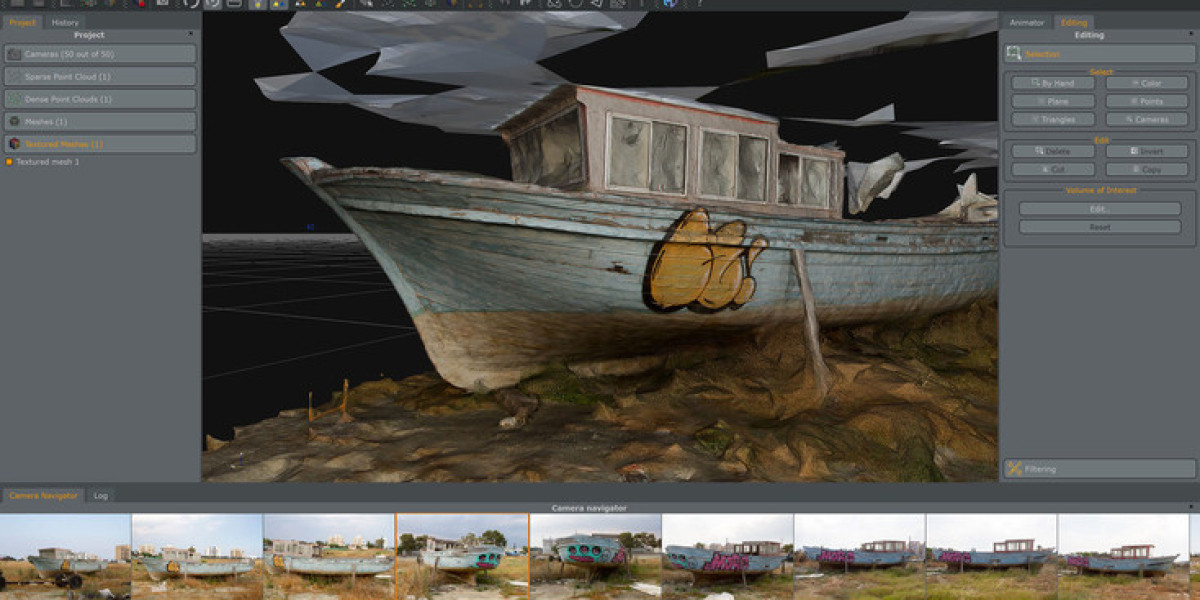The global photogrammetry software market, while still home to a number of academic and open-source projects, is undergoing a significant and accelerating trend towards market share consolidation. A focused examination of Photogrammetry Software Market Share Consolidation reveals that the market is increasingly dominated by a small number of powerful, commercial software providers. This consolidation is being driven by several key forces: the immense R&D investment required to develop and maintain a competitive processing engine, a series of major strategic acquisitions by large technology companies, and the network effects of integrated platform ecosystems. As the use of photogrammetry moves from a niche academic discipline to a mainstream commercial tool, the market is naturally consolidating around the few players who have the resources, expertise, and strategic vision to serve the demanding needs of professional users. The Photogrammetry Software Market size is projected to grow USD 19.54 Billion by 2035, exhibiting a CAGR of 18.2% during the forecast period 2025-2035. As the market expands, the players with the most advanced technology and the deepest pockets are best positioned to capture the largest share, creating a self-reinforcing cycle of consolidation.
The primary force driving this consolidation is the strategic acquisition of leading independent photogrammetry software companies by major technology giants. The most significant and landscape-altering event in recent years was the acquisition of Capturing Reality, the maker of the highly-regarded RealityCapture software, by Epic Games, the creator of the Unreal Engine. This single transaction was a powerful act of consolidation, removing one of the top independent players from the market and integrating its cutting-edge technology directly into one of the world's leading real-time 3D creation platforms. The strategic rationale was clear: to make the process of creating photorealistic, game-ready 3D assets from real-world photos a seamless part of the Unreal Engine workflow. This move dramatically shifted the competitive landscape and put immense pressure on other players. Similarly, the acquisition of smaller photogrammetry startups and technologies by major AEC and geospatial software companies like Autodesk, Bentley Systems, and Trimble has been a consistent trend, as they seek to build out their own "reality capture" capabilities and create a more comprehensive, integrated offering.
This M&A-driven consolidation is further amplified by the immense technical and financial barriers to entry. Developing a world-class photogrammetry engine from scratch is an incredibly difficult task, requiring a team of highly specialized PhD-level computer vision experts and years of complex R&D. The underlying algorithms are a form of closely-guarded intellectual property. This makes it very difficult for a new startup to enter the market and compete on the core technology with the established leaders who have had a decade-long head start. Furthermore, the major players are building powerful ecosystems around their software. Companies like Pix4D have created a complete suite of products, a training and certification program, and a large global user community, all of which create a strong competitive moat and high switching costs for their customers. This combination of M&A activity, high technical barriers to entry, and the power of established ecosystems ensures that the professional photogrammetry software market will continue on its path towards a more consolidated structure, dominated by a handful of powerful and well-funded technology platforms. The Photogrammetry Software Market size is projected to grow USD 19.54 Billion by 2035, exhibiting a CAGR of 18.2% during the forecast period 2025-2035.
Top Trending Reports -
US Outsourced Software Testing Market








